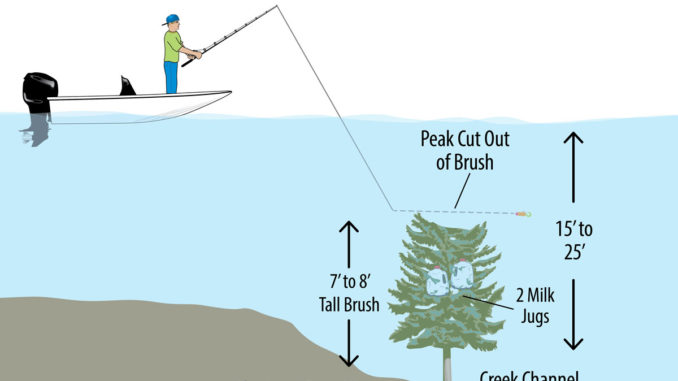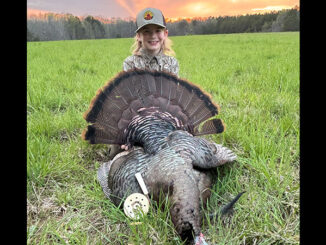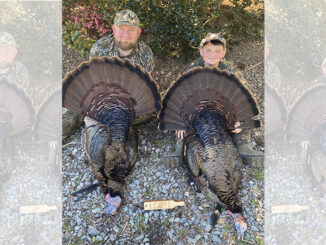
Thanks to enhanced sonar capabilities like side-imaging and down-imaging, finding brush piles on Kerr Lake is easier than ever. However, there’s one sure fire way to have the coordinates of a crappie hot spot before anybody else — put it there yourself.
Guide Chris Bullock stays busy cutting up brush for crappie structure, and he knows a few things about a productive pile.
“Willow makes the best brush pile; you can put it out in the morning and catch fish on it that afternoon. But it’s soft and doesn’t last that long,” he said.
Willow can, however, be supplemented later with hardwoods like sweet gum or sycamore.
Bullock often trims his structure before sinking.
“If the tree has a sharp peak, I’ll go to the widest expansion and cut it flat so I can swim a jig over top of it without hanging up,” said Bullock. “A short tree is fine for a shallow area, but a tree with a long trunk works better in deep water.”
“It’ll take a 10- to 20-pound block or rock to hold it down, depending on the size of the tree,” said Bullock. “I tie it to the trunk with aluminum, electric-fencing wire.”
Despite the need for anchoring, brush will eventually sink to the bottom and lay on its side, however, Bullock has a cure for this as well.
“If you tie on a couple milk jugs, one on each side, it will stay upright,” said Bullock. “I wrap duct tape around the cap to keep them from opening.”
To sink a brush pile at Kerr Lake, one must first obtain a permit from the U.S. Corps of Engineers, and then provide the coordinates of the pile after sinking. Also, you must bring your own brush and be careful not to sink it where it could be a navigational hazard.





Be the first to comment